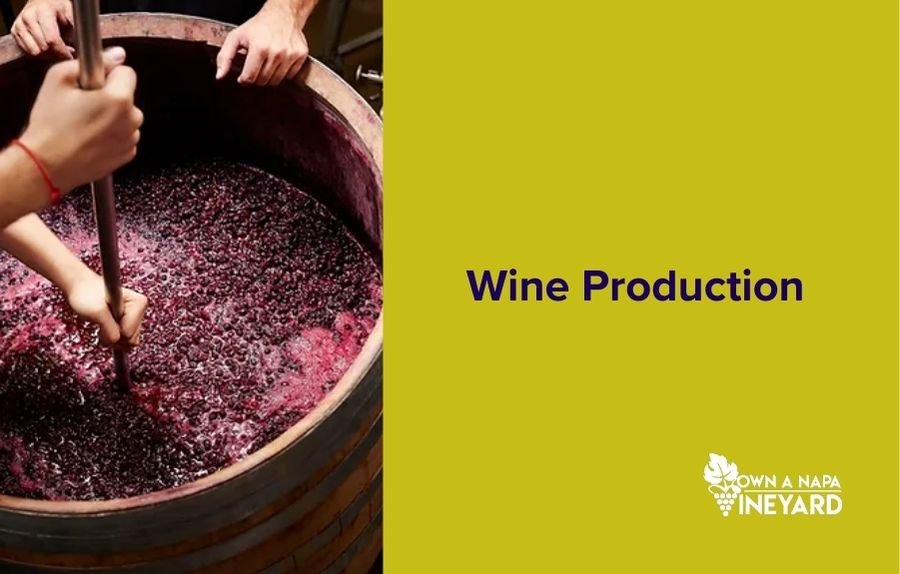When does wine production begin?
This question has intrigued historians, archaeologists, and wine enthusiasts for centuries.
The story of wine is not just about fermentation – it is a rich tapestry woven into the very fabric of human history and culture.
So, in order to determine the origins of wine production, it is necessary to go back into history, to examine the ancient societies, early farming methods, and the development of winemaking processes.
The Earliest Traces of Wine
The earliest evidence points to around 6000 BC in the region of present-day Georgia.
Archaeologists discovered pottery fragments with traces of wine, indicating that ancient people were already cultivating grapes and fermenting them into wine.
This discovery suggests that the practice of making wine is as old as some of the first known civilizations.

Wine in Ancient Egypt and Mesopotamia
Moving beyond the Caucasus region, evidence shows that wine production spread to ancient Egypt and Mesopotamia. In 3000 BC, the Egyptians were producing wine on a larger scale.
Wall paintings in tombs depict scenes of grape harvesting and wine-making, showcasing the importance of wine in their society.
It was used not only for everyday consumption but also in religious ceremonies and as offerings to the gods.
In Mesopotamia, wine was a luxury item, primarily consumed by the elite. The Code of Hammurabi, one of the oldest deciphered writings of significant length, even includes laws regulating the sale of wine.
This indicates the value placed on wine in these early societies and highlights its economic and social significance.
The Role of the Phoenicians
The Phoenicians, an ancient seafaring people, played a crucial role in spreading wine production across the Mediterranean.
Around 1200 BC, they began to establish colonies and trade routes that brought their wine-making techniques to new regions.
As they traveled, they introduced grapevines and wine-making practices to places like Greece, Italy, and Spain.
This dissemination helped wine production take root in Europe, where it would later flourish.
Wine in Ancient Greece and Rome
When did wine production begin to resemble what we know today?
In ancient Greece, wine became a central part of culture and daily life. The Greeks not only consumed wine regularly but also held symposiums, social gatherings where philosophical discussions were accompanied by wine drinking.
They believed that wine was a gift from the gods, specifically Dionysus, the god of wine and revelry.The Romans inherited the Greek love for wine and expanded its production even further. They improved viticulture techniques, developed new grape varieties, and built extensive vineyards throughout their empire.
Roman writers like Pliny the Elder documented various aspects of wine-making, providing valuable insights into ancient practices. The fall of the Roman Empire did not diminish the importance of wine; instead, it continued to be produced and consumed throughout the Middle Ages.
The Middle Ages and the Monastic Influence
During the Middle Ages, monasteries became key centers for wine production. Monks, with their disciplined lifestyles and meticulous record-keeping, contributed significantly to the development of viticulture and oenology.
In regions like Burgundy and Champagne in France, monastic orders planted vineyards and refined wine-making techniques.
These efforts laid the groundwork for some of the world’s most famous wine regions today.
The Age of Exploration and the New World
The Age of Exploration brought European settlers to the New World, where they introduced wine production to new continents.
Spanish missionaries planted vineyards in Mexico and South America in the 16th century.
In the 18th century, wine-making had spread to North America, with vineyards established in California.
This expansion marked a significant milestone in the global history of wine, as new regions with diverse climates and soils began to produce unique wine varieties.
Modern Wine Production
When did wine production begin to modernize? The 19th and 20th centuries saw significant advancements in wine-making technology and science.
The global wine industry experienced a boom in the late 20th century, with new wine regions emerging in Australia, New Zealand, South Africa, and South America.
Today, wine production is a sophisticated and highly regulated industry, with countries around the world contributing to a diverse and dynamic wine market.

The Timeless Appeal of Wine
The journey of wine from its earliest traces in ancient Georgia to its current global prominence spans thousands of years and numerous cultures.
Each era and region has contributed to the evolution of wine-making, shaping it into the beloved beverage it is today.
Understanding the origins and development of wine production not only enriches our appreciation of wine but also connects us to the shared history of human civilization.
For wine enthusiasts looking to immerse themselves in this rich history and culture, there’s no better place than Napa Valley.
Renowned for its exceptional wines and picturesque vineyards, Napa Valley offers a unique opportunity to be part of the wine-making tradition.
Imagine owning a piece of this storied region; with options that are surprisingly affordable, owning a Napa vineyard has never been more accessible. Explore how you can become part of this legacy at Own a Napa Vineyard.
Embrace the timeless appeal of wine, and perhaps consider deepening your connection to its history by becoming a vineyard owner in one of the most celebrated wine regions in the world.





